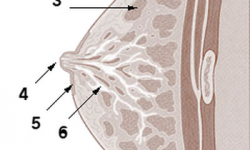Introduction to Panic Attacks
Generally, anxiety disorders are seen as a mental problem. Men and women that have constant worries or concerns are often diagnosed with anxiety, because anxiety has a tendency to create a feeling of fear in otherwise relaxed situations. Many are also familiar with some of the symptoms of anxiety, such as shaking, upset stomach, rapid heartbeat, and more.
But anxiety is more than simply these sensations. There is one anxiety disorder that causes such pronounced physical symptoms.

Understanding Panic Attacks
That many people believe they’re having a heart attack. That disorder is known as panic disorder.
Panic attacks are feelings of intense, impending doom, often related to physical sensations. Those with panic disorder experience a host of physical symptoms that resemble those of a more serious health issue. Symptoms include:
- Rapid heartbeat
- Lightheadedness/feelings of faint
- Trouble thinking
- Nausea
- Chest pain
- Chills/hot flashes
- Sweating
- Feelings of unreality
- Shortness of breath
It can result in a number of other conditions as well, like pain in other areas of the body, trouble holding your head up, tingling in your extremities and more. While these may all be caused by an anxiety disorder, the experience is very physical and very real, so the individual often feels a sense that something is terribly wrong with them.
These attacks generally last between 5 minutes to 30 minutes, but the effects of the attacks can last several hours as the experience itself can be draining. After a panic attack, it’s not uncommon to be both fatigued and on high alert as you fear another attack.
Not all panic attacks are this substantial. Some never reach the true peak stage, instead hovering around this feeling that a panic attack is eminent before it ultimately passes. But even those experiences can be stressful, and often lead to additional anxiety, depression, and/or agoraphobia.
Triggers of Panic Attacks
Panic attacks tend to have triggers, although it’s possible for them to be triggered by nothing at all. Panic attack triggers include:
Over-sensitization
The most common cause of panic attacks is due to becoming over-sensitized to your own body. Essentially, what would otherwise be normal increases in heart rate, incomplete breaths, small pains and so on – the type that most people don’t even notice occur – become incredibly pronounced in those with panic attacks as the mind becomes attuned to noticing each and every one of them. This can often trigger the panic attack reaction.
Thinking About Panic Attacks
Simply the act of worrying about getting a panic attack can cause either a mild or full blown panic attack. That’s because not only does the individual experience anxiety over getting a panic attack, but that anxiety can also trigger symptoms (increase in heartbeat, etc.) that – thanks to the over-sensitization – create the same physical sensations that trigger panic.
Location/Situation Specific Attacks
Panic attacks are known to cause agoraphobia as a result of situational attacks. These occur when you get a panic attack in a place that you’ve gotten panic attacks before, even when you’re not thinking about them. This is a normal part of panic disorder, but unfortunately it often causes people to avoid places they’ve gotten panic attacks in an effort to stop them completely. Eventually you run out of places, and ultimately you become afraid to go outside at all hoping to save yourself from the panic attacks.
Even though many of the fears of panic attacks are related to health or imminent doom, knowing that you’re having panic attacks and not a health scare does not necessarily help. In the moment, with the anxiety rushing over you, it’s impossible to not have the “what if” scares, especially during a full blown panic attack.
Treatment for Panic Disorder
While doctors prescribe many medications for panic disorder, the best course of treatment isn’t medication, but rather cognitive behavioral therapy, lifestyle changes, and research. The more you understand about your own panic disorder the easier it is to control, and therapy and lifestyle changes can reduce the way you react to outside stimuli in order to lessen, and eventually eliminate the panic attacks entirely.
Panic attacks may be an anxiety disorder, but the experience is unlike what most people traditionally see as anxiety. Seeking treatment as soon as possible is one of the best ways to keep your panic attacks from getting out of control.
About the Author: Ryan Rivera suffered from intense, debilitating panic attacks for most of his adult life, partially due to a lack of understanding about the disorder. Now he writes about panic attacks for others at www.calmclinic.com
Newsletter
Get our Tips and Tricks to your Inbox



